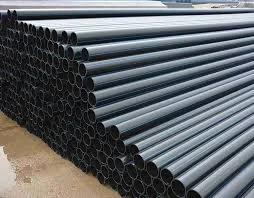Oct . 22, 2024 14:54 Back to list
Understanding PPR Pipe Applications and Benefits for Sustainable Plumbing Solutions
Understanding PPR Pipes The Future of Plumbing Solutions
In the world of modern plumbing and construction, PPR pipes, or Polypropylene Random Copolymer pipes, have emerged as a popular choice for various applications. Known for their durability, versatility, and cost-effectiveness, PPR pipes offer numerous advantages over traditional plumbing materials. This article explores the benefits, applications, and features of PPR pipes, shedding light on why they have become a preferred solution for both residential and commercial plumbing needs.
What are PPR Pipes?
PPR pipes are made from a type of thermoplastic polymer called polypropylene. This material is known for its excellent resistance to temperature changes and chemical corrosion, making it an ideal choice for transporting hot and cold water. The random copolymer structure of PPR enhances its flexibility and strength, resulting in a pipe that can withstand high pressures and temperatures.
Key Advantages of PPR Pipes
1. Durability and Longevity One of the most significant benefits of PPR pipes is their durability. These pipes are resistant to wear and tear and can last for over 50 years when properly installed. This longevity translates into reduced maintenance costs and lower replacement frequency.
2. Temperature Resistance PPR pipes have a high melting point, which allows them to handle hot water applications without deforming or losing integrity. They can withstand temperatures up to 95°C (203°F), making them suitable for both heating systems and plumbing installations.
3. Chemical Resistance PPR pipes exhibit excellent resistance to a wide range of chemicals, including acids and bases. This characteristic makes them highly adaptable for various applications, including industrial use, where exposure to corrosive substances is common.
4. Lightweight and Easy to Install Compared to metal pipes, PPR pipes are significantly lighter, which simplifies transportation and installation. Their ease of handling reduces labor costs and installation time.
5. Low Thermal Conductivity PPR pipes have low thermal conductivity, which helps maintain the temperature of the fluids they carry. This feature is particularly beneficial in hot water systems, as it minimizes heat loss.
6. Cost-Effectiveness Although the initial cost of PPR pipes may be higher than some traditional options, the long-term savings from reduced maintenance and replacement costs make them a more economical choice in the long run.
ppr pipe

Applications of PPR Pipes
PPR pipes are utilized in a wide range of applications, reflecting their versatility
- Residential Plumbing From supplying hot and cold water to heating systems, PPR pipes are increasingly used in homes due to their reliability and longevity.
- Commercial Plumbing Hotels, hospitals, and commercial buildings benefit from the durability and low maintenance requirements of PPR pipes, making them a go-to choice for plumbing systems.
- Industrial Applications PPR pipes are often used in factories and plants where chemical resistance is essential, such as in water treatment facilities and food processing plants.
- Irrigation Systems Farmers and agricultural enterprises utilize PPR pipes for irrigation. Their resistance to chemicals and ability to handle changes in pressure make them suitable for diverse agricultural needs.
Installation and Maintenance
The installation of PPR pipes is relatively straightforward. They can be joined using heat fusion methods, which create seamless and leak-proof connections. This approach enhances the overall integrity of the plumbing system. As for maintenance, PPR pipes can be easily cleaned and are less prone to scale build-up compared to metal pipes.
Conclusion
In conclusion, PPR pipes represent a modern solution for plumbing needs, combining durability, flexibility, and cost-effectiveness. Their advantages over traditional materials, along with their wide range of applications, make them an attractive choice for builders, plumbers, and homeowners alike. As societal demands continue to evolve, PPR pipes are poised to play a critical role in the future of plumbing, offering reliable and sustainable solutions for generations to come. Investing in PPR pipes today is not just a wise choice; it’s a step towards embracing a more efficient and environmentally friendly future in plumbing.
-
High-Quality PVC Rigid Sheet (Glossy Surface) for Industrial Use
NewsJul.26,2025
-
High Quality PVC Rigid Sheet (Embossed Surface) for Industrial Use
NewsJul.25,2025
-
High Quality PVC Soft Sheet for Flexible Applications | Durable & Customizable
NewsJul.24,2025
-
High-Quality UPVC Water Supply Pipe for Durable Plumbing Solutions
NewsJul.23,2025
-
High-Quality PVC-M Water Supply Pipe for Reliable Plumbing Solutions
NewsJul.22,2025
-
High-Quality PVC Transparent Pipe with Clear Visibility & Durability
NewsJul.22,2025

